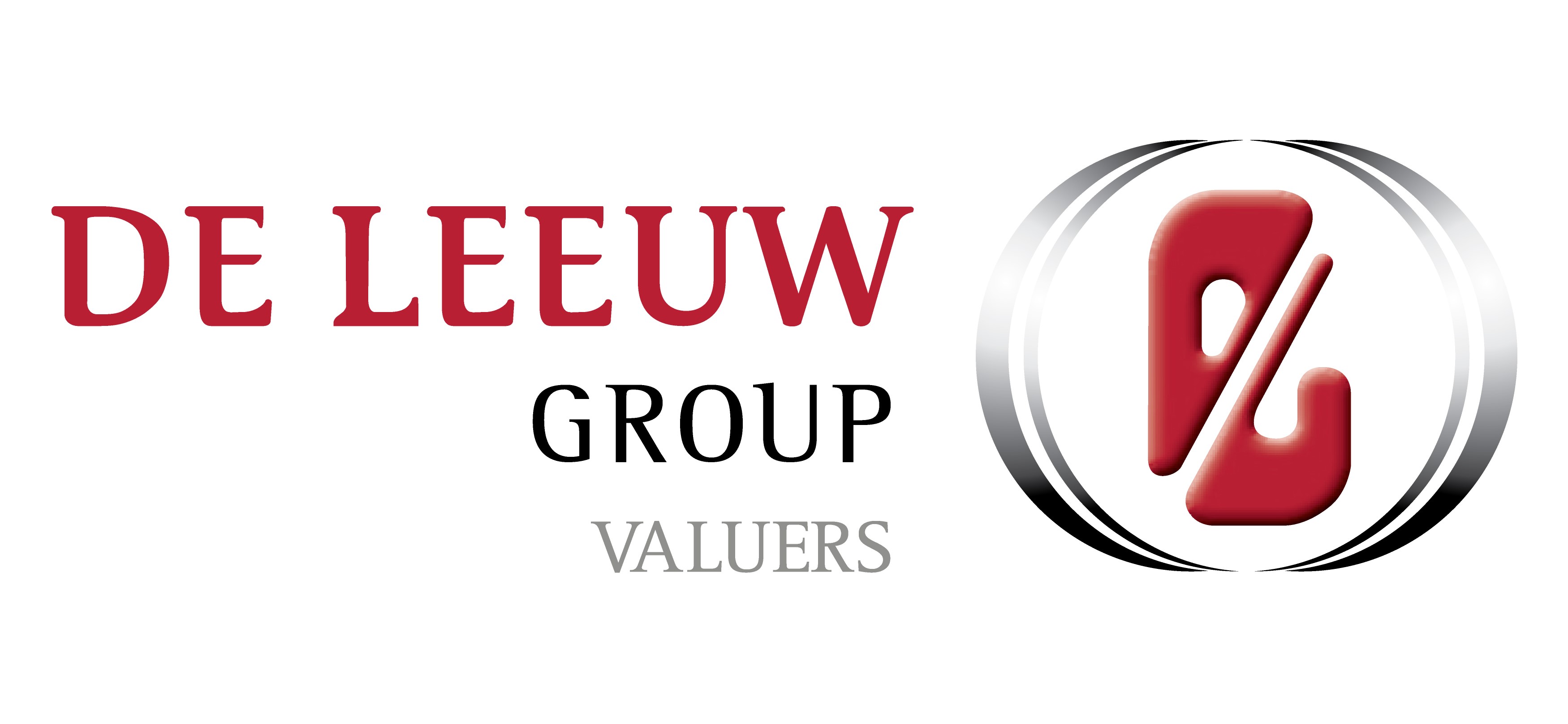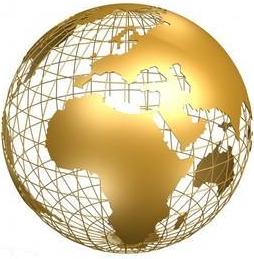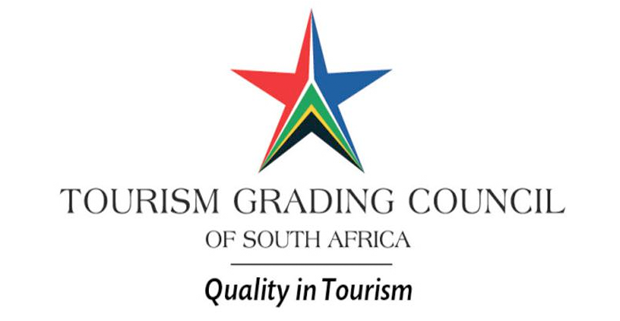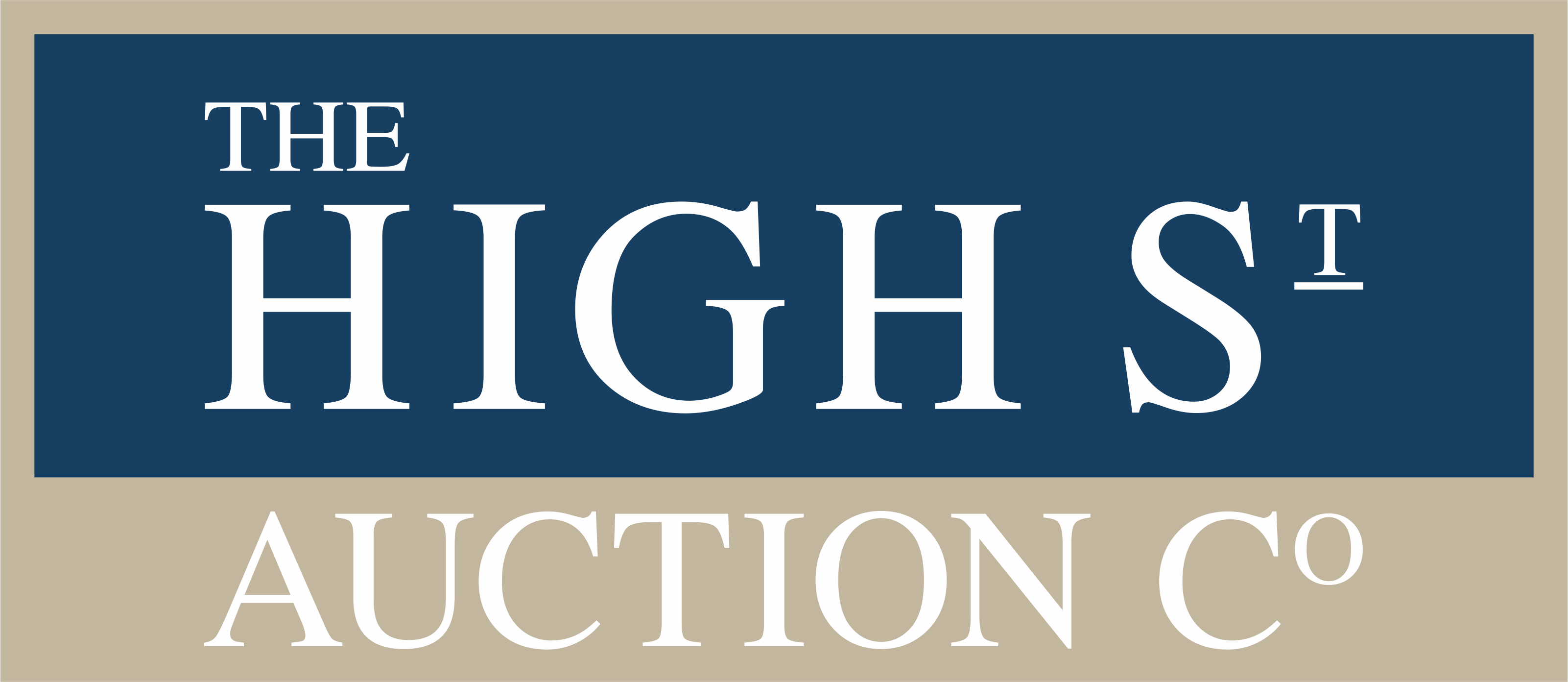







































































A review of our Palace Hotel from the Owner/Agent
This luxury 4* Palace hotel has a fantastic location very close to the German border, international clientele already and with a great expansion potential!
It is beautifully situated complex Palace and park-farm. Intimate Baroque Palace surrounded by an old park with few and far between historic old trees. The palace was built in the years 1790-1795. The Palace park area consists of almost 11 hectares,upon which multiple residential buildings and renovated farm buildings from the eighteenth and nineteenth centuries are situated.
In 2007 year the current owner, acquires the ruined Palace. In the following year acquires adjacent buildings and begins a 5 year, very difficult and detailed renovation in collaboration with the best specialists from the renovation of historic buildings in Poland as well as from Europe (Italy, France and Germany). Refurbished property wins multiple awards for the implementation of the project at the highest level and with the representation of all the historical details of the property.
In 2011 his property received a 4 stars hotel rating, thus the property relishes a great interest of German visitors, also due to location close proximity with Germany border, located near the existing network of highways and airports. The property is based only 220 km from Berlin, 240 km from Prague/ Czech Republic and 140 km to Wroclaw airport. The Palace has been recognized as a consecutive victor of many local & International.
The complex surface of the Palace is 5914 m2consisting of 47 comfortable rooms for about 120 guests. Each room is different, depending on its nature. Specification of hotel rooms is as follows: 11 apartments in the Palace building, 36 rooms located in different buildings (outbuildings).
There is a sophisticated playroom for children – 400m2 opened in 2018, 2 professional bowling tracks built in 2018, a room in the basement with the possibility of use on, i.e. a cigar-room. Library as well as up-to-date kitchens are located in the basement of the main building, 4 separate halls in the lobby are used as a restaurant. The separate SPA Wellness building is 1.159 m2 of usable space including a pool housing building - 238m2, pool length is 15,5m; the pool is equipped with water jets, swim jets and bikes as well as treadmills to exercise in the water. Banquet Hall building - usable area is 877 m2. The building is adjacent to a dance hall with sectional wooden floors -150 m2 usable space. There are many conference rooms, wedding hall - 300 m2 and a storage room, air-conditioned throughout, two stylish cellars dedicated for wine tasting, renovated wine cellar - 120m2. There is also a mansion - Tuscan Villa; usable area: 330 m2; residential building currently serving as owner’s residency, consisting of five bedrooms, two bathrooms, and a large kitchen.
Vineyard; usable area: 0.9h- 3600 seedlings in the process of acquiring an ecological certificate (red variety Rondo, Regent, Cabernet-Cortis, whit Johanniter and Solaris). Golf Driving Range with a length of 250 meters. Outside swimming pond with a sandy beach, a pier, canoe and pedal boat as well as fish stock. The owner also leases from the local municipality the former airport runway which measures 900m in length and 23m width. We are in the course of obtaining a permit for recreational and private use of this runaway only. This airport is located 300m from the edge of the estate. Additionally 24/7 private heliport was opened on the plot of the property in 2017. The entire property is fenced in. Option to park more than 100 cars and several coaches.
The business brings the profits from the day 1 after opening, the average rooms’ booking exceeds 73% . The complex is a good investment, it can be easily transformed into a 5 star hotel, a private villa property or a Summer village luxury estate for the new owner.
Expansion Possiblities
The Golf Course : 1km from the Palace Property there is over 20 hectares of the plot in one piece that belongs to the local municipality – it is very cheap and for sale, ready to build 18 hole golf course + possible 100 bed property
Horse stable/ horse breeding: There are buildings in the complex of the property that are able to be transformed into stables for 8-12 horses
Medical Clinic investments / possibility for private small airport / expansion of the hotel with 40 rooms. Full info on request.
Some of these proposals of the development pointed above can be co-financed by European Union
Note: In Poland there is 23 % VAT on the sale, but is deductible.
Our Palace Hotel combines historical charm with modern, ecological luxury that will accompany you during your rest, stay in SPA & Wellness or at a conference. Combining classic elegance with contemporary amenities, Traditional Polish hospitality distinguishes us from other facilities in Poland.
About Us
Beautiful grass, lush crowns of over 200-year-old trees, colorful flower beds and the scent of lavender floating in the air - the Palace Park is a perfect place for long walks. Wandering around it, guests can disappear in the privacy of a hectare vineyard with almost 4,000 grape seedlings (Rondo, Regent, Johanniter, Cabernet Cortis and Solaris). The whole thing is completed by a stocked pond, on which we can go kayaking or simply use the sunbeds on the sandy beach.
Additionally: Golf Driving Range - first golf swing training, beach volleyball court or archery course. For the youngest there is a playground, trampolines or a tree house.
We Recommend
Our guests can start the day with a morning walk or go to fitness classes organized by experts, disappear in the privacy of our 1ha vineyard with 4,000 seedlings (Rondo, Regent, Cabernet Cortis, Johanniter, Solaris) or go fishing in a pond.
People staying at the Wiechlice Palace can choose something for themselves from among their favorite activities: exercises with the use of devices, rollmassage and stationary bicycles, steppers, treadmills. We also invite you to use the services of qualified cosmetic staff and masseurs.
Apartments and Rooms
A unique building of baroque architecture rebuilt under the watchful eye of the conservator.
Our Palace Hotel is classic elegance and modern amenities.
Using the historic spatial arrangement, we gave each room an individual, unique character.
A modern fire protection system is responsible for the safety of our guests, and professional service will take care of your comfort and satisfaction. Breakfast and access to the wellness area included in the price of accommodation. At the reception desk there is a scanner, fax, copier.
1-Person Apartment
Large, spacious rooms. Interiors kept in a palace-like atmosphere, decorated with stylish furniture.
2-Person Apartment
These apartments have a double bed. Interiors kept in a palace-like atmosphere, decorated with stylish furniture.
Twin Apartment
The twin apartment is equipped with:
Superior Single Room
Simplicity, functionality and original architecture of historical buildings from the 18th century.
Superior Double Room
Simplicity, functionality and original architecture of historical buildings from the 18th century.
Single Room
These rooms are located in the Oficyna building.
Double Room
These rooms are located in the Oficyna building
Double Room + 1 Extra Bed
These rooms are located in the Oficyna building.
Double Room + 2 Extra Beds
These rooms are located in the Oficyna building.
The Cottage
Amenities:
The Restaurant
The essence of taste at its best
Delicious Dishes
Our Palace restaurant is a place that seduces with its unique atmosphere. In four stylish restaurant rooms, our guests enjoy delicious dishes with elements of traditional Polish cuisine. Out of concern for the quality and taste of our meals, we choose fresh products from the best organic farms in the region.
We Invite
Experienced chefs and palace cooks with the utmost care prepare meals tailored to the tastes, expectations and requirements of our guests, combining the tradition of Polish and Mediterranean cuisine, both in a classic and vegetarian version.
For the needs of wedding ceremonies taking place at our Palace, as well as conferences and conventions, we prepare a special menu individually tailored to the wishes of the event organizers.
Spa & Wellness
Each of us dreams of a moment of respite ... in a place where he will find his own oasis of peace ...
In unique, historic interiors you will find peace and the possibility of the deepest relaxation. The elegance of the interior, combined with the unprecedented care for guests, will make you want to come back to us often. SPA is a promise of relaxation, and we are pleased to invite you to this world that we create with passion for our guests.
Cosmetology
In beauty salons, we use BABOR cosmetics, the strength of which is the power of nature and the power of science. Searching for high-quality active ingredients, creating new concepts and products - all this is done in cooperation with leading research centers. Experience is an inseparable element of the brand, on its basis it is possible to create care rituals with incredible potency.
In the massage parlors you can put yourself in the hands of wonderful therapists. Massages are performed with natural sweet almond oil with the addition of aromatic butters.
Wellness Attactions
The Wellness Zone of our Palace Hotel is an indoor swimming pool with an area of 60 sq m and a sauna zone, where you will find a Finnish sauna and a Roman bath.
The swimming pool is equipped with a number of water attractions, including counter-currents, water jets, wall massages, water curtains and geysers. Comfortable sun loungers will make the moment of relaxation pleasant.
We also invite you to use, among others, the gym located on the first floor of the SPA building
Thanks to the Wellness Zone, you have the opportunity to spend your free time in a place worthy of the Roman Gods and Goddesses.
There is a reason why our swimming pool is often compared to Roman baths. Next to the pool there is a sauna area with a dry and wet bath.
We also invite you to use, among others, the gym located on the first floor of the SPA building. You will find there, among other things, stationary spinning bikes, treadmills, a weight-bearing area, a punching bag and an ergometer. There are also devices supporting slimming, such as: V-line, Rollmassage and Wibra line.
Inhalatorium
A room whose walls, ceiling and floor are covered with salt. We carry out HALOTHERAPY in the inhaler, which is a natural method of treatment with the use of salt. There is a specific microclimate through the use of a halogenerator, which produces a dry salt aerosol with a negative charge. Many studies have confirmed the beneficial effect of halotherapy on chronic respiratory diseases, allergies, asthma and cystic fibrosis. Dry salt aerosol has bactericidal properties, which means that pathogens are neutralized, which prevents infection between people staying in the INHALATORIUM.Through the strong influence of salt on the respiratory system, we also have an impact on the circulatory and nervous immune systems and the skin.
The healing effects that can be obtained after HALOTHERAPY sessions are
Floating
Quick, deep physical and mental relaxation is the key to a better life. We have a way - Floating - sensory deprivation, which consists in floating on the surface of the water in a specially prepared cabin using REST therapy.
Confereneces and Training
Conferences at the highest level
OurPalace Hotel, thanks to its convenient location and rich infrastructure, is an ideal place for all kinds of conferences, conventions and prestigious corporate training.
Training rooms with full technical infrastructure, professional sound system, fast Internet and high-class audio-video equipment provide conference participants with ideal working conditions, and a comfortable accommodation base, the palace restaurant and the exclusive recreational area guarantee relaxation and rest at the highest level.
Training Rooms
The palace training rooms are intimate rooms for business and recruitment meetings, which can accommodate up to 40 people. The court conference room is an ideal place for meetings for up to 300 people. It is conducive to the organization of large congresses, training sessions, meetings, business meetings and events. There is even a possibility of placing a passenger car in it.
At the client's request, we arrange the conference rooms in any configuration in order to create the most optimal workplace.
Equipment of Rooms
We also combine conferences, trainings and business meetings with leisure and entertainment, offering our guests a wide range of accompanying events. The multi-hectare park allows you to organize various outdoor programs.
An Unusual Event
The stylish interiors of our Palace and a vast picturesque park with old oak trees are the perfect scenery for wedding ceremonies. An elegant ballroom for 200 people, with excellent acoustics and full technical infrastructure, together with rooms for guests and an exquisite menu of the palace restaurant, provide a perfect setting for weddings and celebrations organized here.
We offer the bride and groom a stylish setting for the wedding party and wedding ceremony as well as the opportunity to take advantage of many additional attractions. We also organize outdoor wedding ceremonies in the palace garden.
Professional Organisation
Experienced advisers help in choosing the right menu for this special day, arranging the interior of the banquet hall and decorations.
They also help in the selection of a cameraman, photographer, florist, wedding car or musical setting.
Occasional Celebrations
The Palace offers its guests the organization of various types of special events such as: banquets, anniversaries, baptisms, communions, birthdays or name days.
Intimate celebrations (up to 40 people) can be organized in the palace restaurant rooms, or in the case of large events in the Court banquet hall that can accommodate up to 200 people. The extensive, picturesque palace park with old oak trees is also an ideal place to organize barbecue feasts.
At your request, we prepare a specially composed menu. We will also take care of stylish interior design, musical setting and additional attractions.
Events
Our offer includes integration and incentive events as well as incentive trips, which are an excellent way to reward your best employees or appreciate key customers.
The extensive palace park is a great place to organize picnics, barbecue feasts or outdoor games.
Additional attractions, such as: SPA & Wellness complex with a swimming pool, sauna zone and fitness zone, restaurant, as well as Nordic walking, bicycles and a beach volleyball court, create an inspiring base for meetings.
Attractions
Classic elegance and modern amenities - our Palace is an ideal place for lovers of peace, tranquility and good wine.
Bikes
The palace also offers bike and sports equipment rentals. Guests can go on excursions in the area.
And there is a lot to see: the old airport , which was once part of a military airbase, is located nearby. More information about this facility can be found here. The quiet neighborhood also allows you to walk with Nordic Walking poles.
Our white "bikes" are also an incredible attraction. A visit to the Palace doorsteps should be crowned with a photo or video of a ride on these bikes. It will undoubtedly be a unique souvenir - where else will you be able to ride a 4-meter bicycle.
Bowling & Kids Club
Bowling 'Club'
Bowling Alley
Bowling is currently one of the most attractive social and sports games.
It can be a great alternative for evening meetings with friends. Bowling Club at our Palace Hotelis a unique entertainment and sports place.
Interesting places in the area:
Szprotawa
Żagań
Museum of Camps in Żagań
Skidding track in Tomaszów
Kożuchów
Nowa Sól
Bolesławiec
Zielona Góra
Lubuskie Warte Zachodni
Regenerative Drips at our Palace Hotel
We would like to kindly inform you that our rehabilitation center offers regenerative drips which will make your stay with us even more fruitful and will help you recharge your "batteries" for everyday struggles. The drips are given by an experienced anaesthesiological nurse after the prior qualification of our doctor.
Wiechlice
Wiechlice is a village in the administrative district of Gmina Szprotawa, within Żagań County, Lubusz Voivodeship, in western Poland. It lies approximately 8 kilometres (5 mi) east of Szprotawa, 21 km (13 mi) east of Żagań, and 42 km (26 mi) south of Zielona Góra.
History
The village was first mentioned in 1260 as Vechlic, when it was part of Piast-ruled Poland. In the 18th century it was annexed by Prussia. During the Napoleonic Wars a temporary hospital for French troops was created in the local palace. From 1871 to 1945 the village also formed part of Germany. During World War I, Germany operated a prisoner-of-war camp in the village, whose prisoners were the English, French, Belgians, Italians, Serbs, Romanians and Russians. In 1918–1919, Polish insurgents of the Greater Poland uprising were imprisoned at the camp. There is a cemetery of the prisoners of war from World War I and a monument to imprisoned Polish insurgents at the site. After the defeat of Nazi Germany in World War II in 1945, the village became again part of Poland. A nuclear bunker was built in the 1960s.
Szprotawa
Szprotawa is a town in western Poland, in Żagań County, Lubusz Voivodeship. It has 11,820 inhabitants (2019).
History
The region was part of Poland after the emergence of the Piast monarchy in the 10th century. The first mention of today's Szprotawa comes at 1000 in the chronicle of bishop Thietmar of Merseburg, who accompanied the emperor Otto III on pilgrimage to the grave of Saint Adalbert in Gniezno. Iława, currently a district of Szprotawa, is one of the two hypothetical locations where emperor Otto III and Polish ruler Bolesław the Brave could have met. The area was part of medieval Poland, and later on, it was part of the Polish Duchy of Głogów, created as a result of the fragmentation of Poland. It was ruled by the Piasts and Jagiellons, including future Kings of Poland John I Albert and Sigismund I the Old, until its dissolution in 1506. Szprotawa received town rights around 1260.
Szprotawa was granted town rights around 1260 by Piast Duke Konrad I of Głogów, who also erected new town walls. In the 13th century, Szprotawa was settled by Germans as part of the Ostsiedlung.In 1304, Szprotawa gained full city rights and privileges, including the internal organization of the City Council "Concilium Magistratus". In 1331, together with the Duchy of Głogów, Szprotawa, although ruled by the Polish Piast dynasty, became a fief of the Bohemian (Czech) Crown. In 1506 it was incorporated into the Bohemian Kingdom, although Polish King Sigismund I the Old continued to claim the duchy and the town until 1508. It was since ruled directly by the Bohemian Jagiellons until 1526 and afterwards it was held by the House of Habsburg.
Since the Middle Ages, the town's wealth was primarily attributable to trade, mainly in cattle, salt and grain, from Silesia and Greater Poland to German states. From the 14th century also hammer mills were located there.
After the First Silesian War in 1742 Szprotawa, under the Germanized name Sprottau, fell to Prussia, like almost all Silesia. After the reorganization of Prussia in 1815, Sprottau became part of the province of Silesia, and from 1816, was the seat of the district of Sprottau, part of the government district of Liegnitz. With the Unification of Germany in 1871, Sprottau was incorporated into the German Empire.
In the first half of the 20th century, the city had an economic boom in the iron, textile and wax goods industry. The Wilhelmshütte iron and enamel companies of Aktiengesellschaft furnace employed more than 400 people. In 1939, the city had 12,578 inhabitants. During World War II the Germans established two labour units of the prisoner-of-war camp in Żagań (then Sagan), intended for Italian and Soviet POWs.
During the Second World War, 90 percent of Sprottau was destroyed. The city was occupied by the Red Army in the spring of 1945. After the war, the redrawn in the Potsdam Agreement placed the town, once again, inside Poland. The town's population fled or was expelled and town was resettled by Poles.
Lubuskie
Lubuskie Voivodeship - a voivodeship in western Poland , created in 1999 - as a result of administrative reform - from most of the territories of the former voivodships: Gorzów and Zielona Góra , and a small part of Leszno , and operating since January 1, 1999. The seat of the voivode is Gorzów Wielkopolski , and the voivodeship self-government authorities - Zielona Góra .
From the north it borders with the province Zachodniopomorskie , from the east - from the province Wielkopolskie , from the south - from the province. Lower Silesia , and to the west - with Germany (Brandenburg and Saxony). According to the data as of December 31, 2018, it covers an area of 13 987.93 km², and its population is about 1 million inhabitants according to data from June 30, 2020 (which makes it the second, after the Opolskie Voivodeship, the least populous voivodeship in Poland ). It has the largest forest cover in the country (49%).
The name of the voivodeship derives from the historical land - the Lubuskie region . The voivodship comprises the lands of four historical lands - the Lubuskie region, Lower Silesia , Greater Poland , and Lower Lusatia . Contrary to its name, it does not contain Lubusz , because this city is located in Germany.
History
1945–1998
On July 6, 1950, as a result of the administrative reform, the Zielona Góra Province was created from the western part of the Poznań Province and a part of the Wrocław Province , roughly coinciding with the borders of the present province. Lubuskie (it includes the historic lands of Lower Silesia, Lower Lusatia, western Greater Poland and the eastern part of the Lubuskie region). The administrative reform of 1975 led to the division of the former Zielona Góra Voivodeship into the Gorzów Voivodeship and the new Zielona Góra Voivodeship , which existed until December 31, 1998.
The 1998 reform
According to the initial draft of the reform, prof. Kulesza, the former Gorzów and Zielona Góra voivodeships, were to be divided between the Zachodniopomorskie (Gorzów Wlkp), Dolnośląskie (Zielona Góra) and Wielkopolskie voivodships . This was met with numerous protests organized mainly by the then opposition SLD (during one of the demonstrations, even a malicious poem was coined: Ziemia Lubuska greets Prime Minister Buzek) and by the Association for the Promotion and Establishment of the Lubuskie Voivodeship established on February 25, 1998, which, to support its cause, collected 110,000 signatures under its draft citizenship act, and on May 31st organized a blockade of the international Poznań-Świecko road and the Gubin - Guben border crossing . For the same purpose, 18 local parliamentarians signed on March 13, 1998 in today's Gościkowo , the so-called the Paradyska Agreement, which is a joint support for the idea of establishing the Lubuskie Voivodeship, arguing its rightness with the economic potential of the region, its infrastructural cohesion, and a sense of regional identityand the ability of both future voivodeship capitals to divide competences and cooperate. Ultimately, the government turned out to be unable to carry out its project (as a result of the president's vetoing the act) and it became necessary to crate other provinces, including Lubuskie. Its name comes from the historic town of Lubusz (now: Lebus in Germany), which was the administrative and cultural center of the Lubuskie region in the Middle Ages , including the seat of the Lubusz diocese . The Germans themselves call the Lubuskie Land Lebuser Land or Neumark ( Nowa Marchia ), or less frequentlyOstbrandenburg (East Brandenburg).
Geography
According to data from January 1, 2017, the area of the voivodeship was 13,987.93 km², which is 4.5% of the area of Poland.
The voivodeship's forest cover is 49%. According to the data from December 31, 2012 in the province. In the Lubuskie region, forests covered an area of 687.2 thousand hectares. ha, which constituted 49.1% of its area. 4.6k ha of forests were within the national parks.
Poland
Poland, officially the Republic of Poland, is a country in Central Europe. It is divided into 16 administrative provinces called voivodeships, covering an area of 312,696 km2 (120,733 sq mi). Poland has a population of over 38 million and is the fifth-most populous member state of the European Union. Warsaw is the nation's capital and largest metropolis. Other major cities include Kraków, Wrocław, Łódź, Poznań, Gdańsk, and Szczecin.
Poland has a temperate transitional climate and its territory traverses the Central European Plain, extending from Baltic Sea in the north to Sudeten and Carpathian Mountains in the south. The longest Polish river is the Vistula, and Poland's highest point is Mount Rysy, situated in the Tatra mountain range of the Carpathians. The country is bordered by Lithuania and Russia to the northeast, Belarus and Ukraine to the east, Slovakia and the Czech Republic to the south, and Germany to the west. It also shares maritime boundaries with Denmark and Sweden.
The history of human activity on Polish soil dates to circa 10,000 BC. Culturally diverse throughout late antiquity, the region became inhabited by tribal Polans who gave Poland its name in the early medieval period. The establishment of statehood in 966 coincided with a pagan ruler of the Polans converting to Christianity under the auspices of the Roman Church. The Kingdom of Poland emerged in 1025 and in 1569 cemented its longstanding association with Lithuania, thus forming the Polish–Lithuanian Commonwealth. It was one of the largest great powers of Europe at the time, with a uniquely liberal political system that adopted Europe's first modern constitution in 1791.
With the passing of a prosperous Polish Golden Age, the country was partitioned by neighbouring states at the end of the 18th century and regained its independence in 1918 as the Second Polish Republic. In September 1939, the German-Soviet invasion of Poland marked the beginning of World War II, which resulted in the Holocaust and millions of Polish casualties. As a member of the Communist Bloc in the global Cold War, the Polish People's Republic was a founding signatory of the Warsaw Pact. Through the emergence and contributions of the Solidarity movement, the communist government was dissolved and Poland re-established itself as a democratic state in 1989.
Poland is a parliamentary republic, with its bicameral legislature comprising the Sejm and the Senate. It is a developed market and a middle power; it has the sixth largest economy in the European Union by GDP (nominal) and the fifth largest by GDP (PPP). It provides very high standards of living, safety and economic freedom, as well as free university education and a universal health care system. The country has 17 UNESCO World Heritage Sites, 15 of which are cultural. Poland is a founding member state of the United Nations, as well as a member of the World Trade Organization, NATO, and the European Union (including the Schengen Area).
Etymology
The native Polish name for Poland is Polska.The name is derived from the Polans, a West Slavic tribe who inhabited the Warta River basin of present-day Greater Poland region (6th–8th century CE). The tribe's name stems from the Proto-Slavic noun pole meaning field, which in-itself originates from the Proto-Indo-European word *pleh₂- indicating flatland. The etymology alludes to the topography of the region and the flat landscape of Greater Poland. The English name Poland was formed in the 1560s, from German Pole(n) and the suffix -land, denoting a people or nation.Prior to its adoption, the Latin form Polonia was widely used throughout medieval Europe.
The country's alternative archaic name is Lechia and its root syllable remains in official use in several languages, notably Hungarian, Lithuanian, and Persian. The exonym possibly derives from either Lech, a legendary ruler of the Lechites, or from the Lendians, a West Slavic tribe that dwelled on the south-easternmost edge of present-day Lesser Poland region. The origin of the tribe's name lies in the Old Polish word lęda (plain). Initially, both names Lechia and Polonia were used interchangeably when referring to Poland by chroniclers during the Middle Ages.
History
Prehistory and protohistory
The first Stone Age archaic humans and Homo erectus species settled what was to become Poland approximately 500,000 years ago, though the ensuing hostile climate prevented early humans from founding more permanent encampments. The arrival of Homo sapiens and anatomically modern humans coincided with the climatic discontinuity at the end of the Last Glacial Period (10,000 BC), when Poland became habitable. Neolithic excavations indicated broad-ranging development in that era; the earliest evidence of European cheesemaking (5500 BC) was discovered in Polish Kuyavia, and the Bronocice pot is incised with the earliest known depiction of what may be a wheeled vehicle (3400 BC).
The period spanning the Bronze Age and the Early Iron Age (1300 BC–500 BC) was marked by an increase in population density, establishment of palisaded settlements (gords) and the expansion of Lusatian culture. A significant archaeological find from the protohistory of Poland is a fortified settlement at Biskupin, attributed to the Lusatian culture of the Late Bronze Age (mid-8th century BC).
Throughout antiquity (400 BC–500 AD), many distinct ancient populations inhabited the territory of present-day Poland, notably Celtic, Scythian, Germanic, Sarmatian, Baltic and Slavic tribes. Furthermore, archaeological findings confirmed the presence of Roman Legions sent to protect the amber trade. The Polish tribes emerged following the second wave of the Migration Period around the 6th century AD; they were Slavic and possibly may have included assimilated remnants of peoples that earlier dwelled in the area. Beginning in the early 10th century, the Polans would come to dominate other Lechitic tribes in the region, initially forming a tribal federation and later a centralised monarchial state.
Kingdom of Poland
Poland began to form into a recognisable unitary and territorial entity around the middle of the 10th century under the Piast dynasty. In 966, ruler of the Polans Mieszko I accepted Christianity under the auspices of the Roman Church with the Baptism of Poland. An incipit titled Dagome iudex first defined Poland's geographical boundaries with its capital and bishopric at Gniezno, and affirmed that its monarchy was under the protection of the Apostolic See. The country's early origins were described by Gallus Anonymus in Gesta principum Polonorum, the oldest Polish chronicle. An important national event of the period was the martyrdom of Saint Adalbert, who was killed by Prussian pagans in 997 and whose remains were reputedly bought back for their weight in gold by Mieszko's successor, Bolesław I the Brave.
In 1000, at the Congress of Gniezno, Bolesław obtained the right of investiture from Otto III, Holy Roman Emperor, who assented to the creation of additional bishoprics. Three new dioceses were subsequently established in Kraków, Kołobrzeg, and Wrocław. Also, Otto bestowed upon Bolesław royal regalia and a replica of the Holy Lance, which were later used at his coronation as the first King of Poland in circa 1025, when Bolesław received permission for his coronation from Pope John XIX. Bolesław also expanded the realm considerably by seizing parts of German Lusatia, Czech Moravia, Upper Hungary and southwestern regions of the Kievan Rus'.
The transition from paganism in Poland was not instantaneous and resulted in the pagan reaction of the 1030s. In 1031, Mieszko II Lambert lost the title of king and fled amidst the violence. The unrest led to the transfer of the capital to Kraków in 1038 by Casimir I the Restorer. In 1076, Bolesław II re-instituted the office of king, but was banished in 1079 for murdering his opponent, Bishop Stanislaus. In 1138, the country fragmented into five principalities when Bolesław III Wrymouth divided his lands among his sons. These comprised Lesser Poland, Greater Poland, Silesia, Masovia and Sandomierz, with intermittent hold over Pomerania. In 1226, Konrad I of Masovia invited the Teutonic Knights to aid in combating the Baltic Prussians; a decision that led to centuries of warfare with the Knights.
In the mid-13th century, Henry I the Bearded and Henry II the Pious aimed to unite the fragmented dukedoms, but the Mongol invasions and the death of Henry II in battle hindered the unification.As a result of the devastation which followed, depopulation and the demand for craft labour spurred a migration of German and Flemish settlers into Poland, which was encouraged by the Polish dukes. In 1264, the Statute of Kalisz introduced unprecedented autonomy for the Polish Jews, who came to Poland fleeing persecution elsewhere in Europe. In 1320, Władysław I the Short became the first king of a reunified Poland since Przemysł II in 1296, and the first to be crowned at Wawel Cathedral in Kraków.
Beginning in 1333, the reign of Casimir III the Great was marked by developments in castle infrastructure, army, judiciary and diplomacy. Under his authority, Poland transformed into a major European power; he instituted Polish rule over Ruthenia in 1340 and imposed quarantine that prevented the spread of Black Death. In 1364, Casimir inaugurated the University of Kraków, one of the oldest institutions of higher learning in Europe. Upon his death in 1370, the Piast dynasty came to an end. He was succeeded by his closest male relative, Louis of Anjou, who ruled Poland, Hungary and Croatia in a personal union. Louis' younger daughter Jadwiga became Poland's first female monarch in 1384.
World War II began with the Nazi German invasion of Poland on 1 September 1939, followed by the Soviet invasion of Poland on 17 September. On 28 September 1939, Warsaw fell. As agreed in the Molotov–Ribbentrop Pact, Poland was split into two zones, one occupied by Nazi Germany, the other by the Soviet Union. In 1939–1941, the Soviets deported hundreds of thousands of Poles. The Soviet NKVD executed thousands of Polish prisoners of war (inter alia Katyn massacre) ahead of the Operation Barbarossa.German planners had in November 1939 called for "the complete destruction of all Poles" and their fate as outlined in the genocidal Generalplan Ost.
Poland made the fourth-largest troop contribution in Europe, and its troops served both the Polish Government in Exile in the west and Soviet leadership in the east. Polish troops played an important role in the Normandy, Italian and North African Campaigns and are particularly remembered for the Battle of Monte Cassino. Polish intelligence operatives proved extremely valuable to the Allies, providing much of the intelligence from Europe and beyond, and Polish code breakers were responsible for cracking the Enigma cipher. In the east, the Soviet-backed Polish 1st Army distinguished itself in the battles for Warsaw and Berlin.
The wartime resistance movement, and the Armia Krajowa (Home Army), fought against German occupation. It was one of the three largest resistance movements of the entire war, and encompassed a range of clandestine activities, which functioned as an underground state complete with degree-awarding universities and a court system. The resistance was loyal to the exiled government and generally resented the idea of a communist Poland; for this reason, in the summer of 1944 it initiated Operation Tempest, of which the Warsaw Uprising that begun on 1 August 1944 is the best-known operation.
Nazi German forces under orders from Adolf Hitler set up six German extermination camps in occupied Poland, including Treblinka, Majdanek and Auschwitz. The Germans transported millions of Jews from across occupied Europe to be murdered in those camps. Altogether, 3 million Polish Jews – approximately 90% of Poland's pre-war Jewry – and between 1.8 and 2.8 million ethnic Poles were killed during the German occupation of Poland, including between 50,000 and 100,000 members of the Polish intelligentsia – academics, doctors, lawyers, nobility and priesthood. During the Warsaw Uprising alone, over 150,000 Polish civilians were killed, most were murdered by the Germans during the Wola and Ochota massacres. Around 150,000 Polish civilians were killed by Soviets between 1939 and 1941 during the Soviet Union's occupation of eastern Poland (Kresy), and another estimated 100,000 Poles were murdered by the Ukrainian Insurgent Army (UPA) between 1943 and 1944 in what became known as the Wołyń Massacres. Of all the countries in the war, Poland lost the highest percentage of its citizens: around 6 million perished – more than one-sixth of Poland's pre-war population – half of them Polish Jews.About 90% of deaths were non-military in nature.
In 1945, Poland's borders were shifted westwards. Over two million Polish inhabitants of Kresy were expelled along the Curzon Line by Stalin. The western border became the Oder-Neisse line. As a result, Poland's territory was reduced by 20%, or 77,500 square kilometres (29,900 sq mi). The shift forced the migration of millions of other people, most of whom were Poles, Germans, Ukrainians, and Jews.
Geography
Poland covers an administrative area of 312,722 km2 (120,743 sq mi), and is the ninth-largest country in Europe. Approximately 311,895 km2 (120,423 sq mi) of the country's territory consists of land, 2,041 km2 (788 sq mi) comprises internal waters and 8,783 km2 (3,391 sq mi) is territorial sea.Topographically, the landscape of Poland is characterised by diverse landforms, water bodies and ecosystems.The central and northern region bordering the Baltic Sea lie within the flat Central European Plain, but its south is hilly and mountainous. The average elevation above the sea level is estimated at 173 metres.
The country has a coastline spanning 770 km (480 mi); extending from the shores of the Baltic Sea, along the Bay of Pomerania in the west to the Gulf of Gdańsk in the east. The beach coastline is abundant in sand dune fields or coastal ridges and is indented by spits and lagoons, notably the Hel Peninsula and the Vistula Lagoon, which is shared with Russia. The largest Polish island on the Baltic Sea is Wolin, located within Wolin National Park. Poland also shares the Szczecin Lagoon and the Usedom island with Germany.
The mountainous belt in the extreme south of Poland is divided into two major mountain ranges; the Sudetes in the west and the Carpathians in the east. The highest part of the Carpathian massif are the Tatra Mountains, extending along Poland's southern border. Poland's highest point is Mount Rysy at 2,501 metres (8,205 ft) in elevation, located in the Tatras. The highest summit of the Sudeten massif is Mount Śnieżka at 1,603.3 metres (5,260 ft), shared with the Czech Republic.The lowest point in Poland is situated at Raczki Elbląskie in the Vistula Delta, which is 1.8 metres (5.9 ft) below sea level.
Poland's longest rivers are the Vistula, the Oder, the Warta, and the Bug. The country also possesses one of the highest densities of lakes in the world, numbering around ten thousand and mostly concentrated in the north-eastern region of Masuria, within the Masurian Lake District. The largest lakes, covering more than 100 square kilometres (39 sq mi), are Śniardwy and Mamry, and the deepest is Lake Hańcza at 108.5 metres (356 ft) in depth.
There is a considerable fluctuation in day-to-day weather and the arrival of a particular season can differ each year. Climate change and other factors have further contributed to interannual thermal anomalies and increased temperatures; the average annual air temperature between 2011 and 2020 was 9.33 °C (48.8 °F), around 1.11 °C higher than in the 2001–2010 period. Winters are also becoming increasingly drier, with less sleet and snowfall.
Economy
Poland's economy and Gross Domestic Product (GDP) is currently the sixth largest in the European Union by nominal standards, and the fifth largest by purchasing power parity. It is also one of the fastest growing within the Union and reached a developed market status in 2018. The unemployment rate published by Eurostat in 2021 amounted to 2.9%, which was the second-lowest in the EU. Around 61% of the employed population belongs to the tertiary service sector, 31% to industry and manufacturing, and the remaining 8% to the agricultural sector. Although Poland is a member of EU's single market, the country has not adopted the Euro as legal tender and maintains its own currency – the Polish złoty (zł, PLN).
Poland is the regional economic leader in Central Europe, with nearly 40 per cent of the 500 biggest companies in the region (by revenues) as well as a high globalisation rate. The country's largest firms compose the WIG20 and WIG30 indexes, which is traded on the Warsaw Stock Exchange. According to reports made by the National Bank of Poland, the value of Polish foreign direct investments reached almost 300 billion PLN at the end of 2014. The Central Statistical Office estimated that in 2014 there were 1,437 Polish corporations with interests in 3,194 foreign entities.
Poland has the largest banking sector in Central Europe, with 32.3 branches per 100,000 adults. It was the only European economy to have avoided the recession of 2008. The country is the 20th largest exporter of goods and services in the world. Exports of goods and services are valued at approximately 56% of GDP, as of 2020. In 2019, Poland passed a law that would exempt workers under the age of 26 from income tax.
Tourism
Poland experienced a significant increase in the number of tourists after joining the European Union in 2004. With nearly 21 million international arrivals in 2019, tourism contributes considerably to the overall economy and makes up a relatively large proportion of the country's service market.
Tourist attractions in Poland vary, from the mountains in the south to the sandy beaches in the north, with a trail of nearly every architectural style. The most visited city is Kraków, which was the former capital of Poland and serves as a relic of the Polish Golden Age and the Renaissance. Kraków also held royal coronations of most Polish kings and monarchs at Wawel, the nation's chief historical landmark. Among other notable sites in the country is Wrocław, one of the oldest cities in Poland which was a model for the founding of Kraków. Wrocław is famous for its dwarf statues, a large market square with two town halls, and the oldest Zoological Gardens with one of the world's largest number of animal species. The Polish capital Warsaw and its historical Old Town were entirely reconstructed after wartime destruction. Other cities attracting countless tourists include Gdańsk, Poznań, Lublin, Toruń as well as the site of the German Auschwitz concentration camp in Oświęcim. A notable highlight is the 13th-century Wieliczka Salt Mine with its labyrinthine tunnels, a subterranean lake and chapels carved by miners out of rock salt beneath the ground.
Poland's main tourist offerings include outdoor activities such as skiing, sailing, mountain hiking and climbing, as well as agritourism, sightseeing historical monuments. Tourist destinations include the Baltic Sea coast in the north; the Masurian Lake District and Białowieża Forest in the east; on the south Karkonosze, the Table Mountains and the Tatra Mountains, where Rysy – the highest peak of Poland, and Eagle's Path mountain trail are located. The Pieniny and Bieszczady Mountains lie in the extreme south-east. There are over 100 castles in the country, most in the Lower Silesian Voivodeship, and also on the Trail of the Eagles' Nests. The largest castle in the world by land area is situated in Malbork, in north-central Poland.
Cliff Jacobs (Nat Dpl Hotel Man (UJ). MPRE. GA Level 5 TEFL) Managing Principal / CEO Exquisite Hotel Consultants (Pty) Ltd Mobile: +27 (0) 84 413 1071 / +27 (0) 61 716 6951 Email: cliff@exquisitehotelconsultants.com Web: https://www.exquisitehotelconsultants.com © All rights reserved Terms and Conditions apply Scroll down to view our Hospitality Properties and Businesses for sale or lease or lease-to-buy or partnership arrangement or management agreement arrangement.



 Name: BondExcel
Name: BondExcel Mortgage Origination
We interface with all of the major banks in South Africa to ensure that you get the right home loan solution at the best possible rate.
Looking forward to assist you with your home loan application!
 Name: Businessentials For Hospitality
Name: Businessentials For Hospitality Hospitality Consulting, Accounting, Bookkeeping and Payroll Services
 Name: Capital Efficiency Group
Name: Capital Efficiency Group Corporate Finance, Tax & Accounting and Treasury Services.
Attorneys, Notaries and Conveyancers
 Name: D E I R D R E R E N N I E R S Interior Design
Name: D E I R D R E R E N N I E R S Interior Design Interior Design
 Name: De Leeuw Valuers Cape Town
Name: De Leeuw Valuers Cape Town Property Valuation Services
 Name: E C Mobility
Name: E C Mobility International property, law and immigration
 Name: Edward Tokolo Kasete
Name: Edward Tokolo Kasete Real Estate Specialist - Our Associate in Namibia
We offer an international platform of specialist hospitality property and/or business brokering services by listing and marketing for sale or lease or by investment partner arrangement or management agreement arrangement of a variety of hospitality products (i.e. hotels, resorts, boutique hotels, guest houses, guest lodges, B&Bs, game resorts, wine farms, yachts, cruise liners, etc) through our association with EC Mobility (in Portugal and Spain), BON Hotels (Africa), Giovanni Conti (Italy, North and East Africa, Sri Lanka), Nuno Boquinhas (Portugal, Azores, Madeira, Mozambique), Property 24, Seeff Property Services, Harcourts, Realnet, RE/MAX, Dogon Property Group, Rawson Estates, among many other prominent commercial estate agencies throughout Southern Africa - and now we are entering other African Countries on the East and West Coasts of Africa and moving further abroad! To date, Exquisite Hotel Consultants has a presence in over 80 countries - and counting...
Working with the above-mentioned agencies and others provides the largest possible reach nationally and internationally for all prospective buyers and sellers wishing to enter or exit the Hospitality Industry.
Sister websites have been opened in the following countries: United Kingdom: see www.exquisitehotelconsultants.co.uk, and in Germany: see www.exquisitehotelconsultants.de, and in the United States of America: see www.exquisitehotelconsultants.us.
Please note that several of our hospitality properties and/or businesses for sale or lease or through business partnership arrangements or management contracts are officially "Off-Market" - mainly for privacy reasons. Therefore, they are not listed as part of our hospitality properties/businesses for sale or lease stock. Please contact me for further details.
Should you be considering to sell or buy or lease or obtain a partnership arrangement or management agreement arrangement for your hotel, boutique hotel, resort, guest house, B&B, game lodge, game resort, guest farm, yacht or cruise liner etc, I would be most pleased to provide you with further details of our way of working to effectively market and sell your property(ies) and/or business(es).
 Name: Electrolux Professional
Name: Electrolux Professional Food Service, Beverage and Laundry Solutions
Electrolux Professional is a leading global provider of foodservice, beverage and laundry solutions, serving a wide range of customers globally, from restaurants and hotels to healthcare, educational and other service facilities.
 Name: Exquisite Hotel Consultants' Hospitality Training Department
Name: Exquisite Hotel Consultants' Hospitality Training Department Learn to speak Hotel English (one-to-one online course)
Our TEFL trained tutors teach the following functions
The course consists of 21 lessons (4 to 5 one-hour lessons per month).
 Name: FVE Interiors
Name: FVE Interiors Interior Design
 Name: Healing Earth
Name: Healing Earth Hotel Amenities - inspired by Africa
 Name: Hospro
Name: Hospro Hospitality Consultancy and Procurement
 Name: Hotel Revenue Management
Name: Hotel Revenue Management Revenue (yield) Management
Online room inventory Distribution & Rates optimisation
Implementation of Best Available Rate (BAR), in conjunction with point 1 & 2
 Name: Indigo Real Estate Agency
Name: Indigo Real Estate Agency Real Estate Agency - Our Associate in Mozambique
 Name: Lisa Dunn - Tourism Grading Assessor
Name: Lisa Dunn - Tourism Grading Assessor Tourism Grading Assessment
 Name: Ooba (Pty) Ltd
Name: Ooba (Pty) Ltd Mortgage Origination
ooba offers you:
 Name: SK Sambu Tours & Transfers
Name: SK Sambu Tours & Transfers Johannesburg based Tours & Transfers Operator
We look forward to being of service to you.
Kind regards
King Sambu
 Name: Soul Private Collection
Name: Soul Private Collection Hotel Management and Marketing
 Name: The Dumb Butler Hospitality Suppliers
Name: The Dumb Butler Hospitality Suppliers Hotel Linen Suppliers
LUX Award Winners 2021 for The Best Hospitality Suppliers. We are a proudly South African brand established in 2006.
We Supply:
 Name: The High Street Auction Company
Name: The High Street Auction Company
Property Auctioneers
Appreciating Property Value
 Name: Touch Point Retail
Name: Touch Point Retail Smart Interior Design
Cliff Jacobs (Nat Dpl Hotel Man (UJ). MPRE. GA Level 5 TEFL) Managing Principal / CEO Exquisite Hotel Consultants (Pty) Ltd Mobile: +27 (0) 84 413 1071 / +27 (0) 61 716 6951 Email: cliff@exquisitehotelconsultants.com Web: https://www.exquisitehotelconsultants.com © All rights reserved Terms and Conditions apply Scroll down to view our Hospitality Properties and Businesses for sale or lease or lease-to-buy or partnership arrangement or management agreement arrangement.